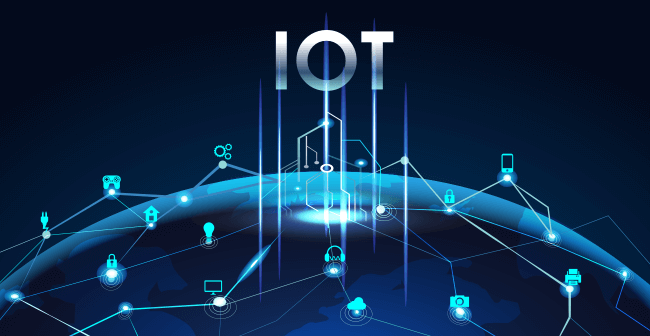Cyberattacks have become alarmingly prevalent in recent years. In fact, according to a report by Cybersecurity Ventures, it is estimated that by 2021, the cost of cybercrime will exceed $6 trillion annually.
These attacks can lead to financial loss, reputational damage, and even the compromise of personal information. Moreover, one cannot underestimate the severity of cyberattacks.
The same report states that an organization falls victim to a ransomware attack every 14 seconds; researchers discover a new malware sample every 4.2 seconds.
These malicious acts not only have the potential to disrupt our personal lives, but they also pose a significant risk to businesses and institutions.
Individuals and organizations must stay informed about the top cyberattacks and proactively protect themselves.
Here are the top five cyberattacks you should be aware of and how to safeguard against them.
1. Phishing Attacks
Phishing attacks are one of the most common and deceptive forms of cyber-attacks. These attacks involve tricking individuals into divulging sensitive information, such as login credentials, credit card details, or personal data, by posing as a trustworthy entity through emails, instant messages, or fake websites.
To protect yourself and your organization against phishing attacks, consider the following strategies:
- Education and Awareness: Educate your team about the telltale signs of phishing attempts, such as suspicious email addresses, grammatical errors, and urgent requests for personal information. By fostering a culture of awareness, you can empower individuals to recognize and report potential phishing attacks promptly.
- Implement Email Filters: Utilize robust filtering systems to identify and flag potential phishing emails. These filters can help divert suspicious emails to spam folders, reducing their chances of reaching your inbox.
- Multi-Factor Authentication: MFA adds an extra layer of security by requiring users to provide verification, such as a unique code sent to their mobile devices and their passwords.
- Regular Updates and Patches: Keep your operating systems, applications, and security software up to date. Regularly installing updates and patches known vulnerabilities, reducing the risk of falling victim to phishing attacks.
2. Brute Force Attacks
Automated systems in brute force attacks attempt to crack passwords or encryption keys by systematically trying every possible combination until they find the correct one.
The following preventive measures can mitigate these resource-intensive and time-consuming attacks:
- Strong and Complex Passwords: Ensure that all accounts and systems utilize solid and unique passwords that include a combination of uppercase and lowercase letters, numbers, and special characters. Avoid using easily guessable information in passwords, such as birth dates or common words.
- Account Lockouts and Suspicious Activity Monitoring: Implement account lockout policies that automatically lock an account after a certain number of failed login attempts. Additionally, monitor accounts for suspicious activity, such as multiple unsuccessful login attempts within a short period, to detect and prevent brute force attacks in real time.
- Two-Factor Authentication (2FA): Enable 2FA wherever possible to provide an additional layer of security. With 2FA, even if an attacker manages to obtain the correct password, they will still require a second authentication factor, such as a unique code sent to the user's mobile device.
- Rate Limiting and CAPTCHA: Implement rate-limiting mechanisms to restrict the number of login attempts from a single IP address within a specific time frame. Additionally, consider integrating CAPTCHA challenges during login processes to differentiate between genuine users and automated brute force attacks.
3. Malware Attacks
Malware, or malicious software, is designed to gain unauthorized access to a user's device and wreak havoc by stealing sensitive data, disrupting operations, or spying on the victim.
The most common type of malware nowadays is Crypto mining malware. It is installed on your device when using unsafe websites; it will utilize your system's resources like CPU and might affect system performance.
To protect against malware attacks, consider the following:
- Antivirus: Install reputable antivirus software and keep it updated. Keep it updated and regularly schedule checks. Additionally, use a VPN on public networks to protect your data from hackers.
- Software Updates: Regularly update your operating system, applications, and security software to patch vulnerabilities that malware may exploit.
- Secure User Practices: Encourage safe browsing habits and educate users on avoiding suspicious downloads, opening unknown email attachments, and visiting potentially harmful websites.
- Use firewalls: Enable firewalls to monitor and filter incoming and outgoing network traffic. Always keep your Microsoft Defender on and keep it updated.
4. Social Engineering Attacks
Social engineering attacks exploit human psychology to manipulate individuals into divulging sensitive information or performing actions that could compromise security.
Most social engineering attacks happen with the elderly or vulnerable members of society who are not aware of cyberattacks. To protect against social engineering attacks, consider these steps:
- Raise Security Awareness: Educate ourselves and our team about cybercriminals' various social engineering techniques. We can better identify and respond to potential attacks by understanding the tactics employed.
- Implement Security Policies: Establish strong security policies that clearly outline procedures for handling sensitive information. Organizations should establish a hierarchy of information to prevent hackers from obtaining sensitive information through identity theft. The Twitter Bitcoin scam incident exemplifies how social engineering attacks utilize identity theft.
5. Distributed Denial of Service (DDoS) Attacks
DDoS attacks overwhelm target networks or websites, rendering them inaccessible to genuine users. These attacks can result in significant financial losses, reputation damage, and customer dissatisfaction.
Protect against DDoS attacks with these measures:
- DDoS Mitigation Services: Collaborate with a reliable DDoS protection service provider that employs state-of-the-art traffic filtering techniques to detect and block malicious traffic while allowing legitimate users to access your resources.
- Scalable Infrastructure: Implement scalable hardware and network capacities that can handle sudden traffic surges, reducing the impact of a potential DDoS attack
- Deploy Intrusion Detection and Prevention Systems (IDPS): IDPS solutions analyze network traffic patterns in real-time, identifying and blocking suspicious or malicious traffic. They can provide early detection and automated responses to mitigate the impact of DDoS attacks.
- Create an Incident Response Plan: Develop a comprehensive incident response plan that outlines the steps to take in the event of a DDoS attack. This plan should include communication protocols, escalation procedures, and responsibilities to ensure a coordinated and swift response.
Conclusion
Organizations can significantly reduce the risk of cyberattacks by leveraging a multi-layered approach to cybersecurity, including robust technological solutions, employee training and awareness programs, and strict access control and data backup policies.
In order to reduce these risks, organizations can achieve ISO 27001 compliance. ISO 27001 is a widely recognized Information Security Management System (ISMS) that organizations can deploy to ensure that their systems and data are adequately protected.
ISO 27001 focuses on information security risk management, ensuring that organizations have effective controls to safeguard against cybersecurity threats.
Moreover, the certification process involves a thorough assessment of an organization's security posture, identifying weaknesses and enabling them to rectify them before any significant harm is done.
By achieving ISO 27001 certification, organizations can demonstrate their commitment to information security, enhancing their reputations and instilling confidence in their stakeholders.















Leave a Reply